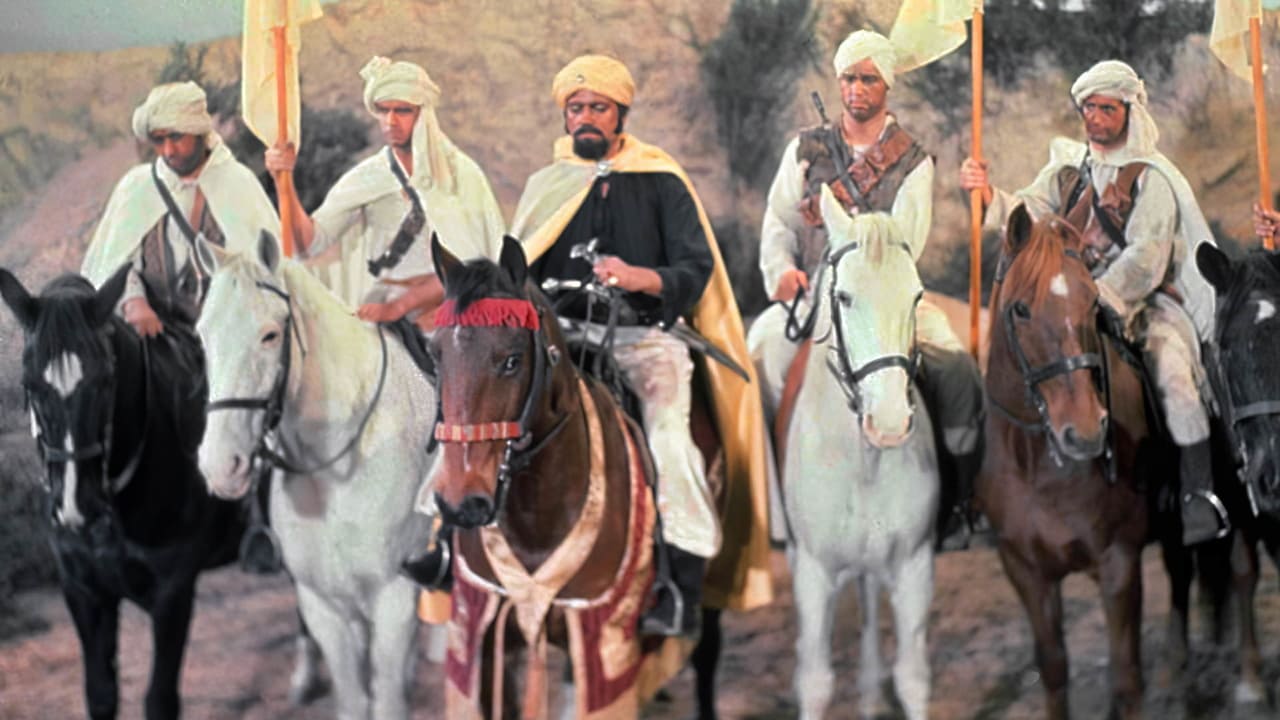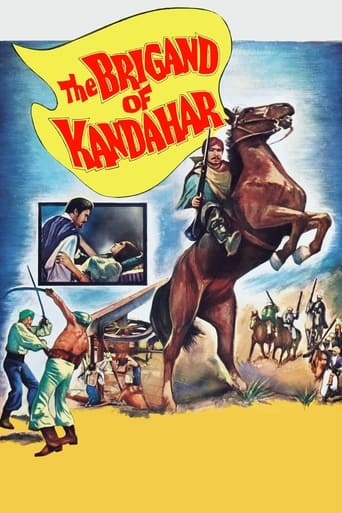

A Hammer Film, released in the U.K. by Warner-Pathé (9 August 1965), in the U.S.A. by Columbia (May 1966). Registered: May 1965. "U" certificate. Copyright 1 July 1965 by Hammer Film Productions. Australian release through Warner Bros: 13 October 1967. 7,319 feet. 81 minutes.SYNOPSIS: Lieutenant Case, a half-caste officer in the Bengal Lancers, runs up against racial prejudice when he returns from a mission in which his colleague, Captain Connelly, was captured by rebel Gilzhai tribesmen; accused of having abandoned Connelly because he coveted the latter's wife Elsa, he is sentenced by Colonel Drewe to ignominious discharge. Furious at the injustice, especially as Elsa refuses to believe his innocence, Case throws in his lot with the Gilzhai leader, Eli Khan, and trains his warriors for an attack on the British. However, he is horrified by Eli Khan's barbarous treatment of his prisoners.NOTES: Produced at Associated British Studios, Elstree, England.COMMENT: A significant proportion of this film is made up of footage from Terence Young's "Zarak" — which is marvelous stuff. On the other hand, "The Brigand of Kandahar" itself is awful. The sets look hideously cheap, the direction is barely competent and the script dull.Most of the acting is of a similar low standard, although Reed, Lamont and Miss Romain make valiant efforts. Production values are virtually nil and entertainment is, at best, slight.
... View MoreIt's not on the same level as Hammer's best adventure films such as "A Challenge for Robin Hood", "The Devil-Ship Pirates" and their previous East India Company film "The Stranglers of Bombay" but it's great fun. Based on its title, I had assumed that the film took place in Afghanistan during the First Anglo-Afghan War (1839-1842) but it actually takes place in India in 1850. The protagonist is Robert Case, a half-Indian lieutenant in the service of the East India Company who is convicted of cowardice under dubious circumstances and joins a group of Indian rebels. The film has a good plot and the characters are strong. I liked the fact that both Colonel Drewe and the rebel Ali Khan were presented as being brutal leaders. Neither side was whiter than white so there is a real sense that Case is conflicted, which I appreciated.Neither Ronald Lewis, who appeared in one of Hammer's best films "Taste of Fear", nor Oliver Reed, in his final Hammer film, make very convincing Indians / Anglo-Indians but they're both very compelling in their respective roles as Case and Ali Khan. The film also has nice appearances in major supporting roles by Duncan Lamont in one of his biggest Hammer roles, Glyn Houston (a much better actor than his elder brother Donald) and Yvonne Romain (another unconvincing Indian but never mind). The weakest link in the cast is Inigo Jackson but he is only in the film for its first half. I'm assuming that Hammer regular Marne Maitland, who was actually Indian, was not in the film because he was busy since he would obviously have been a perfect fit, hence why he had a major role in "The Stranglers of Bombay". It's quite funny considering that he was cast as a particularly unconvincing Chinese man in "The Terror of the Tongs".In contrast to the exotic locations of bigger budget Hammer adventure films such as "She" (which was shot in Israel) and "One Million Years B.C." (which was shot in Lanzarote), this film was shot in rural England and the attempts to pass it off as India are fairly unconvincing. It's a little distracting, to be honest. John Gilling is a good director but he's no Terence Fisher and I don't think that action scenes were really his forte as the ones here aren't up to much. The film loses its momentum a little in its second half, even though it is only 77 minutes long.
... View MoreWhile Hammer Studios produced some fairly able historical adventures in the early 1960s - titles such as the serviceable FURY AT SMUGGLER'S BAY and THE DEVIL-SHIP PIRATES - they also made their fair share of stinkers, of which THE BRIGAND OF KANDAHAR is probably the worst. This is an entirely stodgy costume adventure, made on a low budget and with a script which feels like it was rushed out in a hurry.The story is cheap and carries some distinctly colonial racial overtones, not least in the presence of anti-hero Ronald Lewis, blacked-up as a half-caste for his role. Lewis must be the singular most obnoxious heroic character in a Hammer film, a guy who I actually despised throughout much of the running time; were we really supposed to feel sorry for him after he swapped allegiances like that?Elsewhere, it's sub-ZULU antics throughout, enlivened by a handful of larger-scale battle sequences which employ some dodgy back projection which saps them of realism. Once again Hammer has an eye for a distinguished supporting cast, but most of them are wasted here; the only ones who come out of it well are Duncan Lamont and Katherine Woodville. Oliver Reed is cast as the bad guy but I feel he would have made a much more compelling protagonist. In any case, this is as dull as dishwater and one of Hammer's weakest efforts.
... View MoreEven those with a fondness for those "Northwest Frontier" movies set in the British Raj of the 1800's will probably be disappointed by this minor, unpersuasive, and somewhat uncharacteristic entry from Hammer Films. The costumes have that clean, new look -- as if they just came from a rental shop -- and the handful of sets are too tidy and well-lit to be anything other than studio creations. Even the rocks have a fiberglass look. More troubling than the film's skimpy budget, however, is the casting of its main character. He's supposed to be half-English, half-Indian -- one of those chaps who's worked his way up in the ranks of the British Army but who feels he's still regarded with hostility and suspicion by his colleagues. Not only does Ronald Lewis lack the face for this part, (there's nothing at all Indian about him), but he's also short of the darkly-compelling charisma which might make this character "work." He comes across as a provincial English actor who's dressed up in left-over garb from a production of "Kismet." In his defense, however, it must be said that the script gives him little to work with since his character is poorly developed and too often seems simply like the victim of events going on around him.Oliver Reed might have been a better choice for the lead but here he plays the villain -- a rebellious chieftain who's said to be "half-mad." Unfortunately, this gives him license to indulge in some theatrical behavior which is more embarrassing than enlivening.At one point a captured British soldier is whipped by the rebels but even this sure-fire scene is too poorly staged to arouse much interest. (Why didn't the rebels tear the soldier's shirt all the way off? Didn't they take Flogging 101?)
... View More